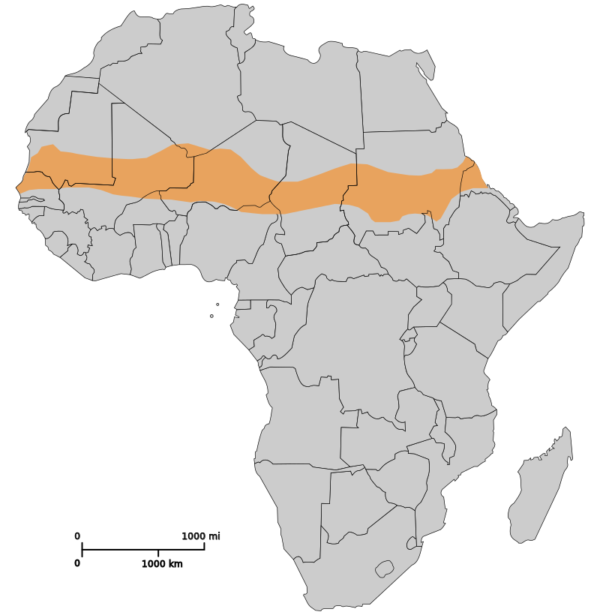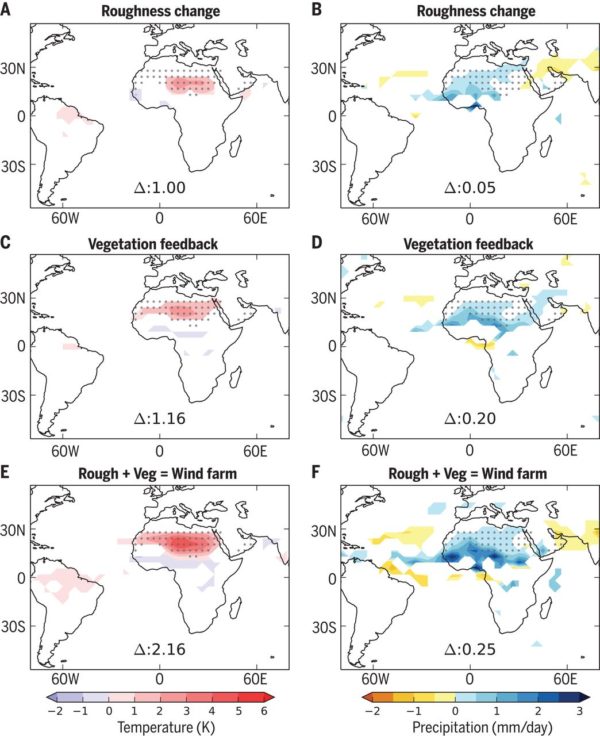A new study, published in the journal Science, shows that solar power plants and wind farms covering large surfaces may be able to contribute to increased rainfall in the Sahara Desert, and particularly in the Sahel region, an ecoclimatic and biogeographic zone of transition between the Sahara to the north and the Sudanian Savanna to the south.

Image: Wikimedia Commons
The study, based on a climate model with dynamic vegetation, shows that the construction of large-scale wind and solar facilities occupying wide surfaces may have, as an initial consequence, a local temperature increase, which would result in increased surface friction and reduced albedo. These two factors, in turn, could increase vegetation coverage, thus creating a positive feedback loop, which would increase rainfall in the region, the authors of the study claim.
According to them, in fact, installed solar plants and wind turbines, if large enough, have the power to modify land surface properties and, in particular, surface roughness and albedo, respectively.
The researchers specified that the wind and solar facilities simulated in their study would generate approximately 3 and 79 TW of electrical power, respectively, averaged over a typical year.

Image: Science
“Compared with the control experiment, a 50% increase in precipitation (+0.13 mm/day) is observed in solar farm locations in the Sahara, and an increase of +0.57 mm/day is recorded in the Sahel,” the scientists found.
The report also notes that changes in climate are especially enhanced when wind and solar plants are deployed together in the Sahara. “The precipitation in the Sahara increases from 0.24 mm/day in the control run to 0.59 mm/day in the case of combined wind and solar farms, a ~150% increase, whereas the temperature increase (+2.65 K) is only slightly larger compared with that for the solar farm alone,” they further explained.
If wind farms contribute to more rainfall, due to the fact that higher surface roughness strengthens low-level convergence, solar plants cause more precipitation. This is due to the decreased albedo associated with panels, which results in more absorption of solar radiation and, hence, surface warming, which leads to low pressure at the surface, as well as convergence, rising motion.
The authors of the report, however, warn that the increase in rainfall linked to solar plants depends on the low conversion efficiency (around 15%) of the solar panels used in the experiment, and the background environment albedo. “If solar panel efficiency and the associated effective albedo are high enough to lead to an albedo increase relative to the background environment (as, for example, a 45% efficiency would), the climate impact would be surface cooling with precipitation suppression, similar to the impact of overgrazing in the desert,” they stated.
The researchers concluded that installations of wind and solar farms with current conversion efficiencies, if carefully planned, may trigger more precipitation in the Sahara Desert, while also enabling these two energy sources to have minimal competition for land surface area against natural and other human land uses, such as agriculture.
This content is protected by copyright and may not be reused. If you want to cooperate with us and would like to reuse some of our content, please contact: editors@pv-magazine.com.




1 comment
By submitting this form you agree to pv magazine using your data for the purposes of publishing your comment.
Your personal data will only be disclosed or otherwise transmitted to third parties for the purposes of spam filtering or if this is necessary for technical maintenance of the website. Any other transfer to third parties will not take place unless this is justified on the basis of applicable data protection regulations or if pv magazine is legally obliged to do so.
You may revoke this consent at any time with effect for the future, in which case your personal data will be deleted immediately. Otherwise, your data will be deleted if pv magazine has processed your request or the purpose of data storage is fulfilled.
Further information on data privacy can be found in our Data Protection Policy.